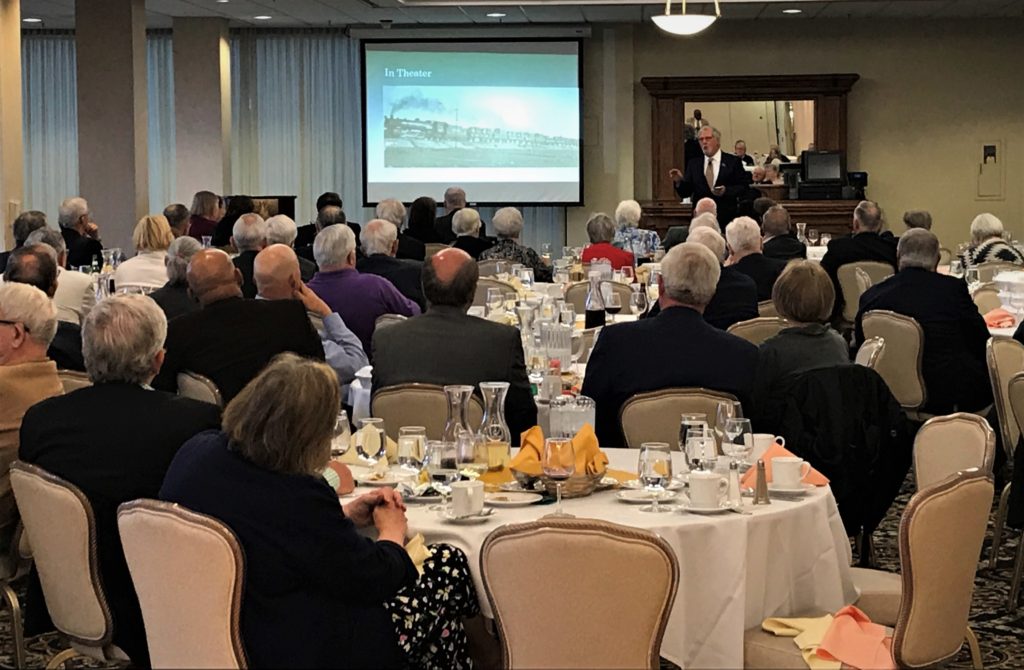Saint Martin on the Potomac
The river was muddy and wide. In the northern distance, the brick-red roof and gold weathervane atop Mount Vernon’s cupola graced its western bank. Talk about history. The window wall of the Fort Belvoir Officers Club was panoramic and the view breathtaking. This was the celebrated venue of the Saint Martin’s Military History Club, my gracious host for a Rails of War presentation.

Saint Martin of Tours, for those like myself not well-versed in Catholic hagiography, was a Roman soldier turned pacifist who embraced Christianity on the cusp of its legal ordination in A.D. 313. Martin shared his soldier’s salary with the poor, famously clothed a freezing beggar with a part of his paludamentum, his cape, and thereupon envisioned the beggar as Christ. Martin left the army, lived as an aesthetic, and founded the first monastery in Gaul, a Benedictine affair. After raising two souls from the dead with prayer, and a plethora of deserving spiritual acts, today’s canonized Martin is a patron of the poor, soldiers, conscientious objectors, tailors, and winemakers. At the Fort Belvoir Officers Club, we had the soldier demo well-covered.
Saint Martin’s membership is smart, curious, and well-versed. There was more military acumen in that room than I could muster in a lifetime. What I had working for my presentation was that the China-Burma-India theater of World War II, often referred to as “The Forgotten Theater,” was a passably novel subject matter. It was a great evening, a great dinner and a fortunate introduction to new friends and old surroundings.
Fort Belvoir, nine miles south of our home in Alexandria, is in our backyard. First used in 1915 as a construction and engineering center it is today, much larger, more mission-diverse, and presently attuned to research and technology, some of which can be publicly acknowledged. But, for my money–and that’s a literal statement because we are supporters–what is yet to come is most interesting.
Fort Belvoir will be the home of the National Museum of the United States Army. Construction is underway on eighty-four acres with a planned opening in 2020. The museum will be grand, guaranteed. I’m happy for the Army, those who served, and our nation, but it will mean more traffic in our neighborhood, a preoccupation in the D.C. Area. If you’d like to support the museum, follow the link. They make it easy and offer a level for every contributor. So, thanks again to the Saint Martin Military History Club for the invitation to talk about Rails of War and thanks to the men and women of Fort Belvoir for their service and dedication. Therein lie countless stories yet told and I humbly encourage everyone who came to me with the question, “How do you write a book?” to find out as I did, begin by telling the story. – SJH





